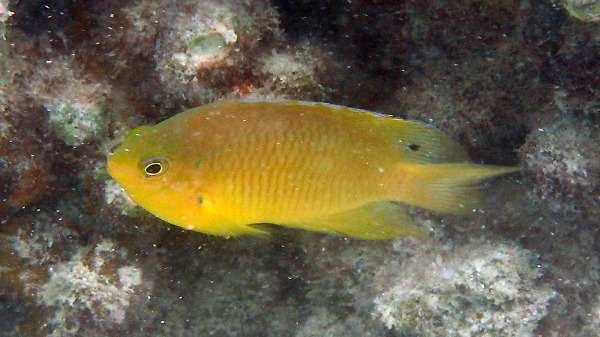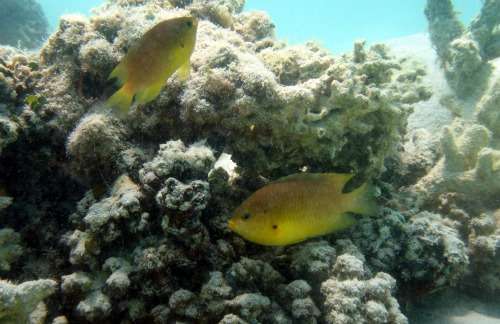Damsel fish's secret communication channel reliant on reef experience

The Ambon damsel (Pomacentrus amboinensis) have been found to need exposure to the natural environment to develop the ultraviolet (UV) facial markings reef fish use as a covert communication system to potentially avoid predators.
Researchers ran experiments on the Great Barrier Reef (GBR) and in the laboratory, to investigate how and why UV markings develop in Ambon damsels during their first month of growth.
The fish possess crystal-like structures called iridophores on their face and depending on which angle light reflects off the iridophores different UV 'colours' or signals are sent.
UWA Research Associate and lead author Professor Monica Gagliano says the benefit of such signals is UV light dissipates quickly in water, and many predatory reef fish cannot see in the UV range.
"It becomes a kind of 'secret channel of communication' between these fish," A/Prof Gagliano says.
In addition to the Ambon damsel UV communication is found in an increasing number of fish species which inhabit WA waters from Dampier to the NT border.
The researchers had expected that when the young Ambons metamorphosed (abruptly changed their physical appearance) from transparent larvae, that UV markings would appear along with their bright-yellow juvenile colouration.
However, they found that in the wild, UV facial markings developed post-metamorphosis at varying ages, until around three weeks when virtually all surviving juveniles possess these markings.
In contrast, none of the fish raised in tanks developed UV markings, regardless of the treatment (food supplementation, competition).

"This indicates UV colours are not part of that process, they are not genetically-wired to appear just because [the fish] are metamorphosing," A/Prof Gagliano says.
The researchers suspect the presence of predators may play a role, perhaps directly through experience or indirectly, through sharing information about predators.
"The initial time on the reef is really crucial for these fish because they suffer very high mortality," A/Prof Gagliano says.
"If [UV markings are] something they use to communicate about predation, it would be quite crucial to develop it at the right time, and not developing it may increase the risk of being taken out of the population," she says.
But A/Prof Gagliano says the exact mechanism for the development of UV markings still requires further investigation.
"What we do know is that the environment as such, full of predators and competitors, the structure of the environment; they are all important factors, and without these, the fish never learn to speak their first words in terms of UV colours," she says.
Provided by Science Network WA



















